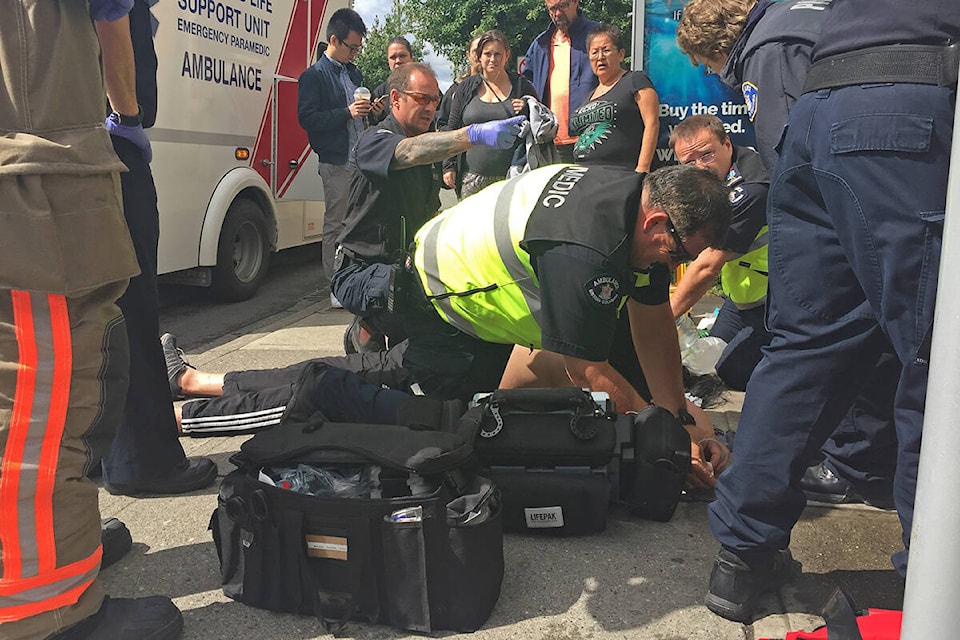By Moira Wyton, Local Journalism Initiative Reporter
Someone living in rural British Columbia who experiences a drug poisoning is 30 per cent more likely to die than someone who experiences one in a city, new research from the BC Centre for Disease Control suggests.
In some of the most remote areas, the fatality rate is up to 50 per cent greater than large city-dwellers.
The study’s findings underline the diverse and far-reaching impacts of B.C.’s toxic drug crisis in communities across the province, said its lead author Kevin Hu.
“There may be a lower overdose frequency in those [rural] areas but there can be a much higher fatality rate,” said Hu, a data analyst at the BCCDC.
And it underlines the importance of establishing harm reduction services and accessible safe supplies of drugs in every community, he added.
The study, published last week in BMC Public Health, looked at overdose data from a variety of emergency and acute health care sources between January 2015 and December 2018 as fentanyl began to contaminate B.C.’s illicit drug supply and drive a rapid increase in drug poisoning deaths.
It sought to identify where a drug poisoning was most likely to kill someone, even if relatively few people are dying in a specific community.
The geographic analysis of 35,569 overdose events showed that about 9.1 per cent of fatal overdoses happened in rural areas, compared to just 5.7 per cent of non-fatal overdoses. About 13 per cent of British Columbians live in rural areas.
This reflects the small number of overdose prevention sites outside cities, as well as the longer response times from emergency services in rural and remote areas, the paper suggested.
Even for people living in the region encompassing Kelowna, Kamloops and Merritt, their odds of dying of an overdose were between 25 and 50 per cent more than the provincial average.
“It’s helpful to think regionally,” said Amanda Slaunwhite, a senior scientist at the BCCDC and study co-author. “The crisis exists and looks different in every community.”
The results also showed the life-saving impacts of harm reduction services, even in communities that experience many drug poisoning events.
READ ALSO: UBC study says more overdose prevention sites could mean fewer overdose deaths
Lower fatality rate “cold spots” were identified around areas like the Downtown Eastside and Downtown Victoria, where overdose prevention sites are concentrated.
“Those cold spots were really promising to see,” said Slaunwhite. “It speaks to the importance of existing services and the willingness of residents to support each other.”
The province declared a public health emergency in April 2016. Since then, more than 10,000 people have died of drug poisonings in B.C. alone.
Vancouver, Victoria and Surrey have consistently seen the greatest numbers of deaths, according to data from the BC Coroners Service.
But deaths have risen the most quickly in the Interior and Northern Health regions, where relatively fewer harm reduction resources and overdose prevention sites exist. These areas currently have the highest per capita death rates, as well.
READ ALSO: 179 people died from B.C.’s poisoned drug supply in October
Comparing neighbourhoods
Disparities in services also exist between neighbourhoods in larger urban centres.
For example, about half of drug poisoning calls in Vancouver come from the Downtown Eastside, according to data from BC Emergency Health Services.
But someone who is poisoned there is about 70 per cent more likely to survive than someone who is poisoned a few kilometres away in southeast Vancouver’s River District, where there are not designated places to use drugs, the paper found.
“Higher income neighbourhoods in Vancouver had some of the highest rates of fatal overdose,” said Slaunwhite.
“There is still a lot of stigma there,” she said. “We see a lot more people are using drugs in private homes, and when you use alone, you are more likely to get into trouble because there is nobody around to provide Naloxone and no OPS staff to intervene.”
Looking at the fatality rate of drug poisonings in addition to the raw and per capita totals of deaths is important for understanding which communities have the most dire need for resources, Hu and Slaunwhite said.
The data illustrates that harm reduction services have helped blunt the impacts of rising toxicity in the supply, and are desperately needed everywhere.
“An OPS in a rural or remote area is going to have a huge impact on fatality rates,” said Hu.
Slaunwhite and Hu stressed the importance of accessible safe supply of regulated, uncontaminated drugs to stop people from dying in every community.
They plan to repeat the study with more recent data soon, and expect the divides to have intensified since 2018.
“I think that our results really speak to the need to expand OPS services but also to get to the heart of the drives of the overdose crisis, which is the toxic supply,” said Slaunwhite. “Anyone, anywhere who uses substances now is at risk.”
